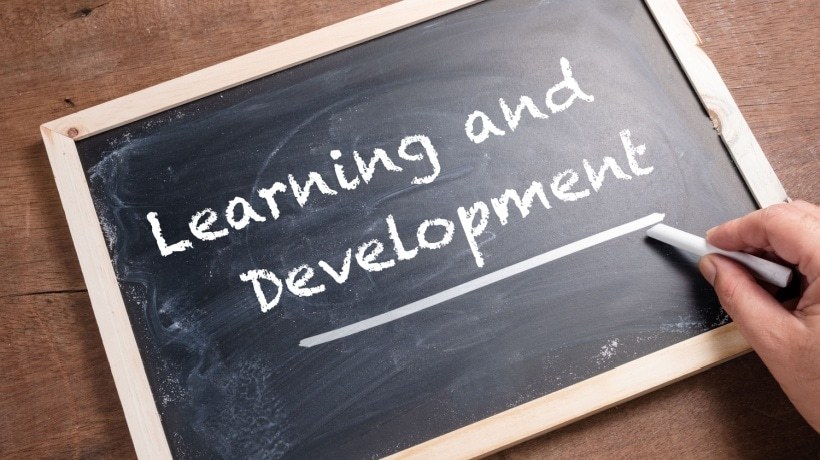L&D Innovation In 2021
In this period of economic and social stress, we need to rely on training more than ever to prepare employees for continued disruption and change. In many ways, we are in the middle of one of the biggest learning opportunities of our lives: learning how to create work environments where safety, quality, and trust become core business values.
To date, companies have made massive investments in training to help employees deal with COVID-related disruptions. This trend will continue well into 2021. Over the next months, the business community has the opportunity to step forward and help everyone feel comfortable being vaccinated through education and targeted communications. Reskilling and upskilling will continue to be important, and there’s evidence that we will see labor shortages for certain critical roles.
Leading-Edge L&D
As a result, we’ve identified new best practices in corporate learning. Research we conducted in partnership with NIIT shows that organizations that invest in the critical practices that drive Learning and Development success are 59% more likely to be growing, are 27% more cost-efficient, and are consistently delivering higher engagement, retention, and leadership scores.
I’ve worked with hundreds of companies on their learning strategies over the last two decades, and I’ve found that there are three fundamental challenges that most organizations share:
- Effectiveness
What L&D programs, tools, and strategies will best “move the needle” on developing the capabilities and skills for success? - Efficiency
How do we strip out the noise, reduce waste, and keep L&D investments focused on the most important areas? - Alignment
How do we continuously realign the entire L&D function/our learning strategy toward helping us deal with the most important, urgent, and strategic issues the company faces?
During times of change and uncertainty, companies need to focus their training activities on business alignment. They will benefit from directing their overall learning strategies to the most important and urgent business issues.
Adaptive learning organizations are deliberate about alignment; such organizations have established learning councils, they are engaged with senior business leaders, and they understand the critical skills and technology trends applicable to the business. Such organizations also have a deep understanding of the company’s job roles, how training programs are currently performing, and any skills gaps within the company. Most importantly, these organizations know how to prioritize. For instance, Microsoft missed the market for search engines, social networking, and mobile, and it was a pivot to a growth mindset that sparked the firm’s success with Azure and the public cloud.
High-performing L&D teams are also heavily involved in future work plans, talent mobility strategies, succession management, and all other areas related to HR and leadership. In addition, such leading-edge L&D organizations also exhibit good planning and governance. L&D leaders must be empowered to build, adapt, and respond to learning needs. This means putting in place learning business partners, capability academies, and strong performance consulting skills to identify performance issues early.
In 2021, for the first time in decades, the area of strategic and facilitated internal mobility is moving into focus. Companies we work with—such as Unilever, Schneider Electric, PepsiCo, Society Generale, and SAP—are all emphasizing internal mobility. In the coming year, we’ll see skills-matching systems and talent marketplace products take off. Of course, we need to recognize that the more people start moving around the organization, the more training they will need to support them in new roles.
A Coming Wave Of New Ideas And Innovations
Innovation and experimentation, especially through technology, will be a defining feature of L&D in 2021 and beyond. Consider innovations like Virtual Reality and Augmented Reality, learning record stores, microlearning, and learning in the flow of work.
LXP vendors are realizing they need business rules, eCommerce, resource management, and even talent marketplace features, so that “layer” of software to just sit atop your LMS is starting to become highly important, making it vital to rationalize what data goes where. What’s becoming clear is that the real data engine of learning is not the LMS or the LXP but the learning records store, where all the detailed learning data now resides.
A final, but important, aspect of L&D innovation is that the demand for content will continue to explode. You’re going to be inundated with new content offerings in 2021 from hundreds of different companies. Tools for learning in the flow of work, internal gig work and mobility, skills-based mentoring and development, and academy-centric learning are also in great demand. Look to see how various players in the enterprise platform market will start showing how these elements all can work together in a highly productive way.
Conclusion
In conclusion, the pandemic has greatly accelerated the transition to more agile ways of working, making L&D adaptability critical. You need to focus on realigning the L&D function to meet current and evolving learning challenges. At the same time, the learning market will continue to be a complex and fast-changing world with dozens of platform providers, hundreds of content companies, and a host of new ideas and innovations emerging.
I encourage you to take some time and create a solid three- to five-year roadmap for your L&D infrastructure, content, and organization strategy. Creating this foundation will really help you stay the course in the coming months.









